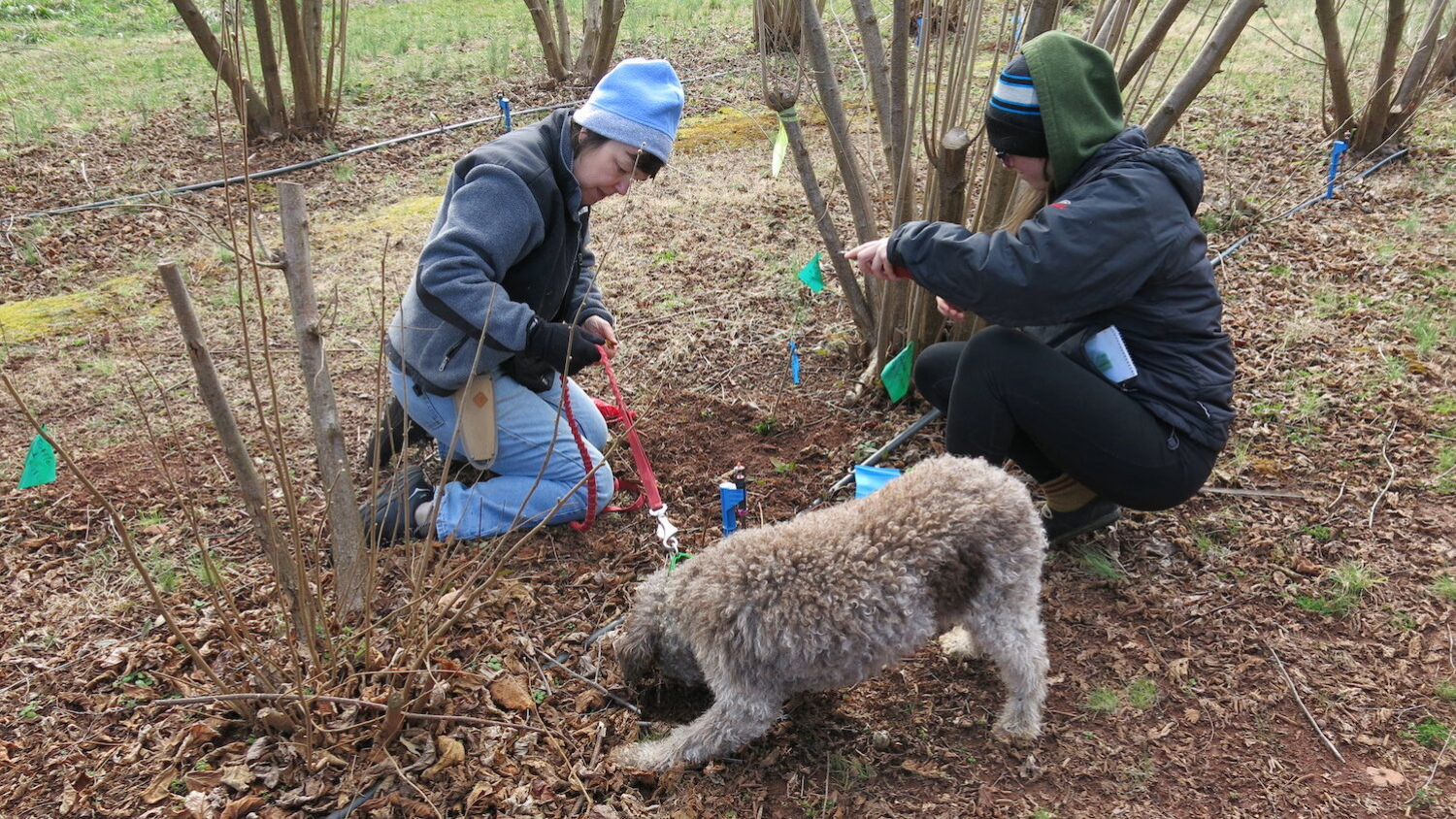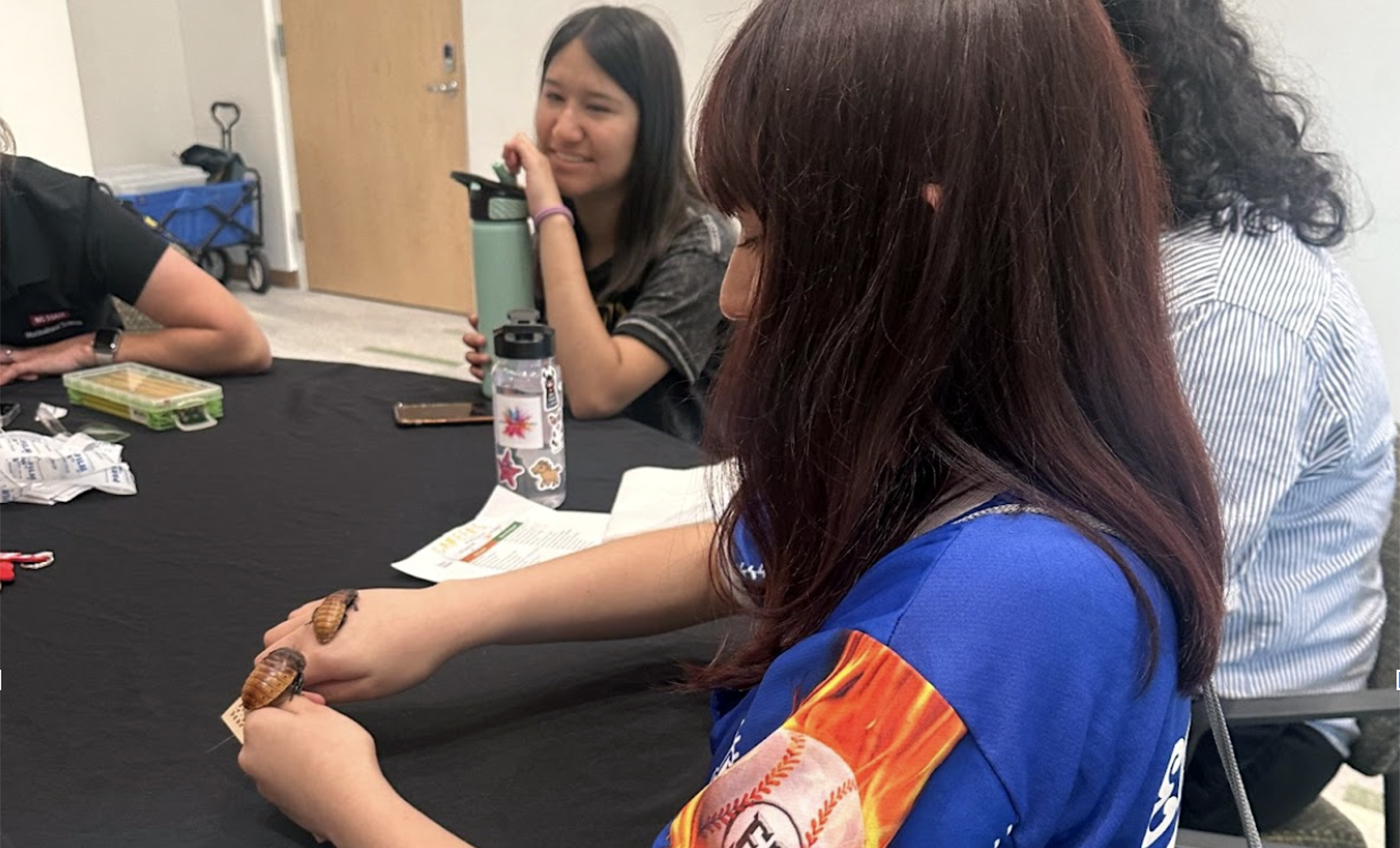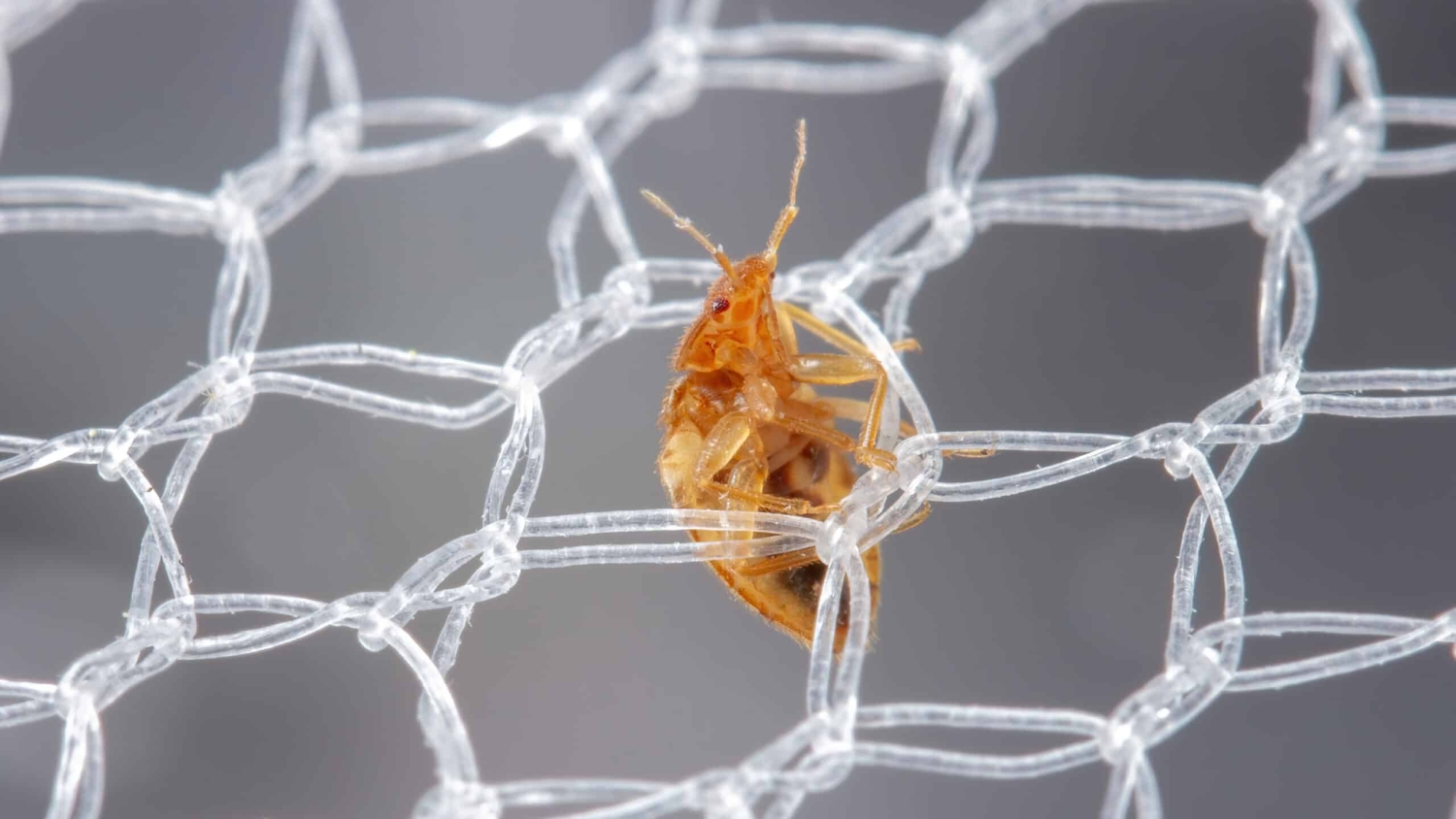This Truffle’s No Trifle

Once a month between October and March, the Mountain Research Station in Waynesville can expect a visit from Monza, a curly-haired Lagotto Romagnolo who has one mission: to find edible gold.
Specially bred and trained to sniff out black Périgord truffles, Monza is a popular guest who has unearthed 51 truffles in the orchard since it started producing the sought-after fungi. Depending on their size, these rare delicacies can fetch over $2,000 per pound.
In this episode of Farms, Food and You, we chat with Katie Learn, assistant professor and Extension specialist in forest health, to learn about this burgeoning and potentially lucrative crop. Our first question: who started cultivating the truffles and why?
To learn more about truffles and other foods sprouting new growth in North Carolina, check out the latest issue of CALS Magazine.
Podcast Transcript
Once a month between October and March, the Mountain Research Station in Waynesville can expect a visit from Monza, a curly-haired Lagotto Romagnolo who has one mission: to find edible gold.
Specially bred and trained to sniff out black Périgord truffles, Monza is a popular guest who has unearthed 51 truffles in the orchard since it started producing the sought-after fungi. Depending on their size, these rare delicacies can fetch over $2,000 per pound.
Today on Farms, Food and You, we chat with Katie Learn, assistant professor and Extension specialist in forest health, to learn about this burgeoning and potentially lucrative crop. Our first question: who started cultivating the truffles and why?
LEARN:
Franklin Garland was one of the first of mass truffle tree producers. So he has a greenhouse, I believe he’s in Huntington, North Carolina, and he was the innovator in mass producing these truffle producing trees. He focuses a lot on hazelnuts, but I believe he does other ones as well, like oaks. He was just inspired by the whole truffle scene out in Europe and wanted to see if we could do it here. He gave us our trees in 2010 and we planted out that first orchard then.
HOST:
The trees aren’t just trees. They are inoculated with a fungal presence that encourages truffles to grow on their roots. It takes a lot of care as these are not naturally occurring in North Carolina’s soil or climate.
LEARN:
It’s very clean potting media and he sticks a hazelnut tree in there and then inoculates that clean media with theTuber melansporum slurry. The easiest way to describe it is you stick some truffles in a blender and add some water and slurry it up and then inoculate that soil with it. So you can’t, you can’t ever just inoculate your existing orchard with truffles. You have to kind of grow it out from nursery and really baby those trees and grow them up a few years. And then you wanna stick them in the ground in a highly limed soil. So you want that pH to be higher than any naturally occurring soil in the United States. So, we typically have kind of an acidic soil around 6.5 and to grow truffles, you really need like an 8.0, so we heavily lime that soil and that kinda stops the native micro or the native fungal presence from producing. Because they can’t really survive at that high of a pH. We’re really stimulating that truffle fungus to be able to survive in that and not be outcompeted by any of the native fungus.
HOST:
Beyond encouraging fungus, truffle orchard farmers need another key ingredient: patience.
The black Périgord truffles that Katie helps grow at the Mountain Research Station station don’t grow for seven seasons.
LEARN:
So it’s 12 years old now and we’ve gotten truffle production, which has been great. We found about, I can tell you an exact number: 51 truffles so far. It was very exciting on year seven when we began seeing them on the roots. We can do this, you know, we, we were really happy to share information with stakeholders and have people visit the orchard. It’s been an experimental inspirational thing for people to come and see production methods and just kind of see with their own eyes. Yeah. We can actually grow these here in North Carolina.
HOST:
Growing the truffles is one thing, finding them is another process entirely. You’ve likely heard that in Europe many times pigs will sniff out the truffles in the forest. In North Carolina the process is a little different.
LEARN:
So it kind of varies on soil and temperature and water and all these factors go into how deep and how large your truffles are gonna be. If you have had a year where you’ve been watering deeply and there’s been a lot of rain, you might see your truffles being produced a few centimeters to a few inches underneath the soil. But if you’re having a dry season, you might see your truffles even sticking out of the ground. Which is, is kind of dangerous because you run the risk of frost damage at that point. So we’re, you know, we’d like to see the truffles be produced underground.
We do use dogs to find them and we’ve been using this wonderful woman named Lois Martin. She works with the truffle dog company and her dog is named Monza.
She’s been coming out since we’ve been finding truffles. She’s our main truffle dog hunter. They have found all 51 truffles for us and they’ve been absolutely wonderful. It’s really a treat to see them work together too. Monza has all these cues where she starts. She’s let out of Lois’s car and Lois actually has a little song. She sings to her that kind of triggers Monza into, Hey, you know, I’m about to hunt for truffles. I gotta get to work, gotta get my nose down.She is really wonderful at hunting for truffles. Lois tries to walk her systematically through the orchard, but sometimes Monza will get a whiff of truffle on the air and she’ll just book it across the orchard and, and, uh, tap the nose with her ground or tap the ground with her nose. That’s kind of her signal that, Hey, there’s something under here, you should dig a bit.
HOST:
When Lois and Monza come out, it’s a happy day at the Research Station, and one that they invite others interested in growing truffles to attend. As with all Extension research, the idea is to share the information they glean with farmers looking to get into the truffle business and create a community that openly exchanges best practices to help make new crops, like truffles, profitable.
LEARN:
There’s a market for them, you know, for the black truffle, but also other truffles. I think that a lot of chefs are really gaining interest in all these different types of truffles that we can grow here. And you know, they can grow on several different types of trees. There’s Oak and hazelnut and Popler beach pine, so there’s, you know, a lot of different combinations of trees and truffles and a lot of things to be discovered. And I think we’ve really just scratched the surface of it.
HOST:
For more insight into black truffles and other new emerging crops, including a few heritage crops making a comeback, follow the URL in the show notes to the 2022 Fall CALS Magazine. There will be a few you’ve heard of and maybe some you haven’t. Anyone cooked a rabbit stew or eaten plant-based BBQ lately? Discover these stories and more at go.ncsu.edu/calsmag.
Thank you for joining us on Farms, Food and You. This podcast is a product of NC State Extension and the College of Agriculture and Life Sciences at North Carolina State University. If you would like to support the show, please share this episode on social media and leave a review on your podcasting app of choice. Let’s talk soon!
- Categories:


